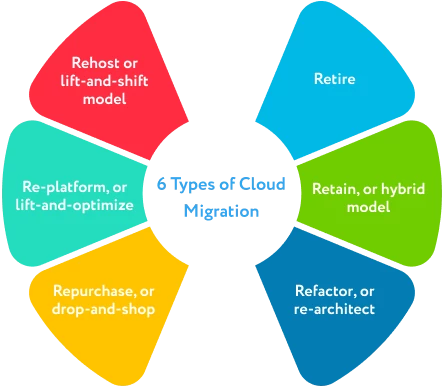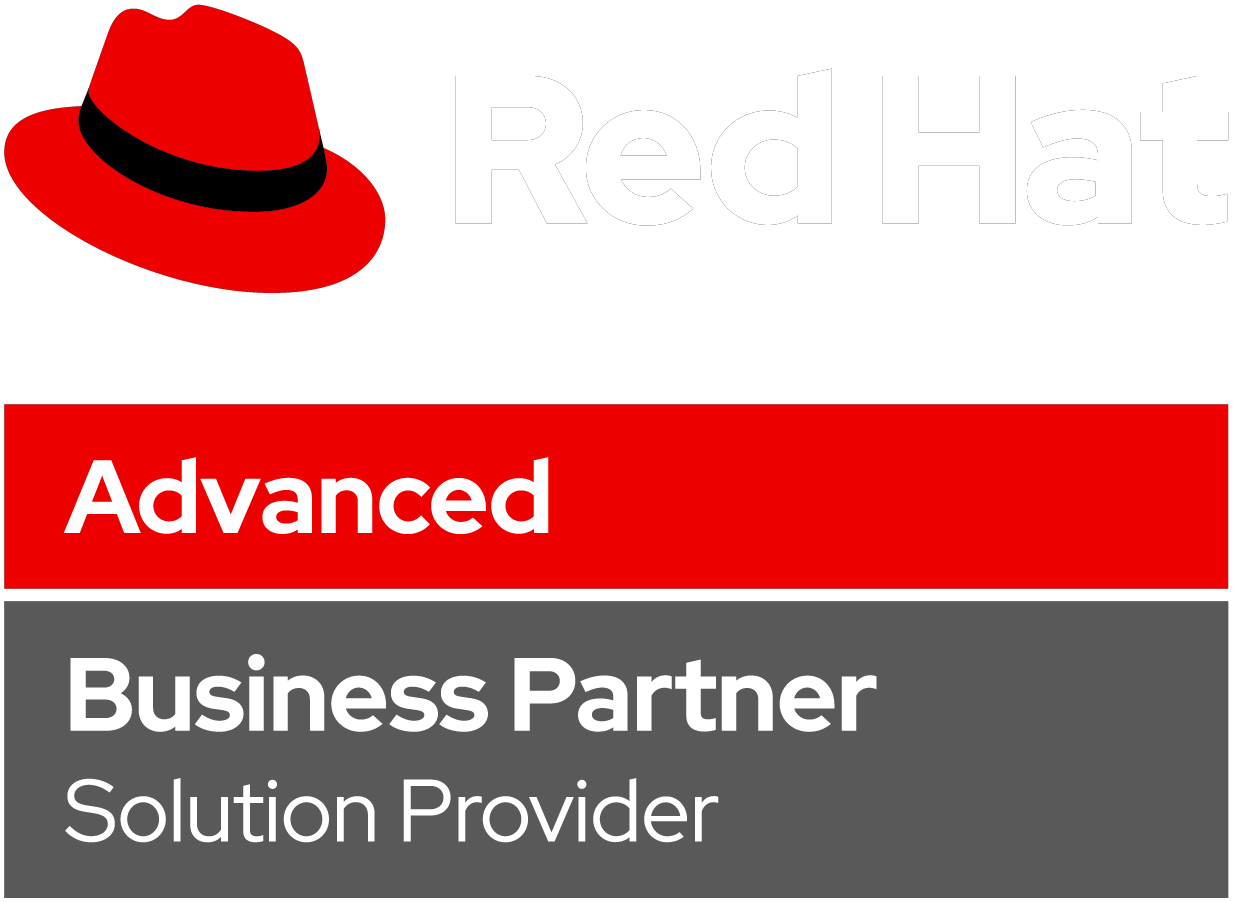As your organization prepares for cloud migration, it is vital that your IT team maintains a comprehensive view of all infrastructure components and available options for migrating each workload. The better you understand what you’re working with, the easier project planning and execution becomes.
Migrating complex IT systems should be done incrementally. Inventorying your systems and in-use applications is the first step in developing your actionable cloud migration plan. Next, you should identify specific types of cloud migration to be performed with each item.
So, what are the cloud migration types? These are the most commonly used approaches:
- rehosting
- re-platforming
- repurchasing
- refactoring
- retaining
- retiring
These strategies are commonly referred to as “the 6 R’s of cloud migration”. When deciding which “R” to use, prioritize the mission-critical services for optimization and refactoring and tackle the rest of your workloads with a simple lift-and-shift. It also can be useful to start from some lower risk non-critical workloads as a pilot test to help you refine the migration process as you get to the critical infrastructure components.
Let’s discuss the operational benefits and business merit of these strategies in detail.

Rehost or lift-and-shift model
Rehosting is the most straightforward cloud migration path. It means that you lift applications, virtual machines, and server operating systems from the current hosting environment to public cloud infrastructure without any changes. It is a low resistance migration methodology that prescribes picking up an application as an image that could be exported via migration tools like VM Import or CloudEndure to a container run on the public cloud.
Choosing lift-and-shift, you should be aware that its quick win comes with a drawback: limited use of cloud efficiencies. Simply rehosting an application workload in the public cloud doesn’t utilize cloud-native features, such as efficient CI/CD automatization, monitoring systems, automated recovery and self-healing, containerized environments, or open-source compatible services. However, you will still be able to reduce efforts spent on system administration and gain some time to refocus technologists on solving business problems and product optimization.
This cloud migration type can also be a starting point for large scale optimization projects when organizations are looking to shift their on-premise infrastructure in a short period of time. For example, your data center lease expires and you need quick rehosting of your current workloads. Once these workloads are in the cloud, further optimizations of the underlying codebase will be easier to accomplish.
Re-platform, or lift-and-optimize
Replatforming involves certain optimizations to the operating system, changes in the API of the applications, and middleware upgrade as you do standard lift-and-shift. As a result, you can leverage more cloud benefits, reshape the sourcing environment and make it compatible with the cloud, fine-tune the application functionality, and avoid post-migration work.
Before implementing some product enhancements, it is important to keep in mind that the underlying codebase will be changed. This means that even insignificant changes require thorough retesting of your application performance. Once you have implemented the planned adjustments and up-versioning, the application can be moved to the optimized platform and cloud servers.
The re-platforming strategy is somewhere in between simple lift-and-shift and a more profound re-architecture of the application. Thus, the alterations in the codebase are more likely to be minor and are not supposed to change the core app functionality. For example, you may want to add new features or replace the application components. Although these changes don’t significantly alter your project, you can improve InfoSec posture and get feature and tooling enhancements.
Repurchase, or drop-and-shop
In this strategy, you change the proprietary application in use for the new cloud-based platform or service. Often, that means that you drop the existing license agreement (or it expires) and go for a new platform or service in its place. For example, you may choose to switch from your legacy CRM system to a new SaaS CRM that meets your organization’s requirements better.
Refactor, or re-architect
This approach is driven by a strong desire to improve your product and represents the opposite of lift-and-shift migration. It is assumed that a specific business target will be set from the beginning, e.g. in terms of availability or reliability of the application performance. Sometimes, that means that you have to re-engineer your application logic completely and develop the cloud-native version from scratch.
Opting for this cloud migration model, you should take into account that it may require more resources due to the increased complexity of its implementation. On the other hand, it allows the full use of cloud-native benefits, such as disaster recovery or containerization of the application environment. In the long run, refactoring can be more cost-efficient because these additional features have been added.
One of the most common examples of refactoring is shifting a mainframe monolithic application to microservices-based infrastructure in the cloud. We’ve laid out the reasoning behind this strategy, what advantages it can bring, key steps, and the needed technology stack in Tabulate’s success story.
Retain, or hybrid model
Some components of your IT infrastructure may be retained on your legacy infrastructure. An organization may want to keep some stand-alone workloads and databases due to security issues or other constraints. For example, you may have to comply with regulatory requirements governing the locations in which certain information is stored. When categorizing the workload for this type of migration, you create a hybrid infrastructure whereby some workloads are hosted in the cloud and some workloads are retained on-premise.
Retire
For many complex applications and environments, some infrastructure components can be easily turned off without any decrease in productivity or value loss for the end consumers. This is achieved by decommissioning or archiving unneeded parts while replacing their functionalities through other services and components. As a result, you can substantially reduce the complexity of your computing, architecture, storage, licensing, and backup, making your infrastructure leaner.
Conclusion
When evaluating which of the “6 R’s” is right for your organization’s migration needs, keep in mind that every cloud migration is unique. The above-mentioned types of cloud migration are not ready-made solutions for every organization. These options should serve as a basis from which to develop the final strategy, which will be tailored to your specific business needs. To develop a successful migration strategy , we recommend looking at the migration process from an application-centric view rather than an infrastructure-centric one.
Cloud migration is a tall order: your migration strategy should be robust and it should help achieve key business objectives, all while being executed in Agile sprints that allow you to incorporate ongoing feedback. Here at Triangu, we help our clients kickstart their migration projects without losing focus on their end-point objectives and business continuity. To learn how Triangu can help you hit the ground running in your migration, schedule a free 2-hour consultation with one of our experts to get feedback on your project.

